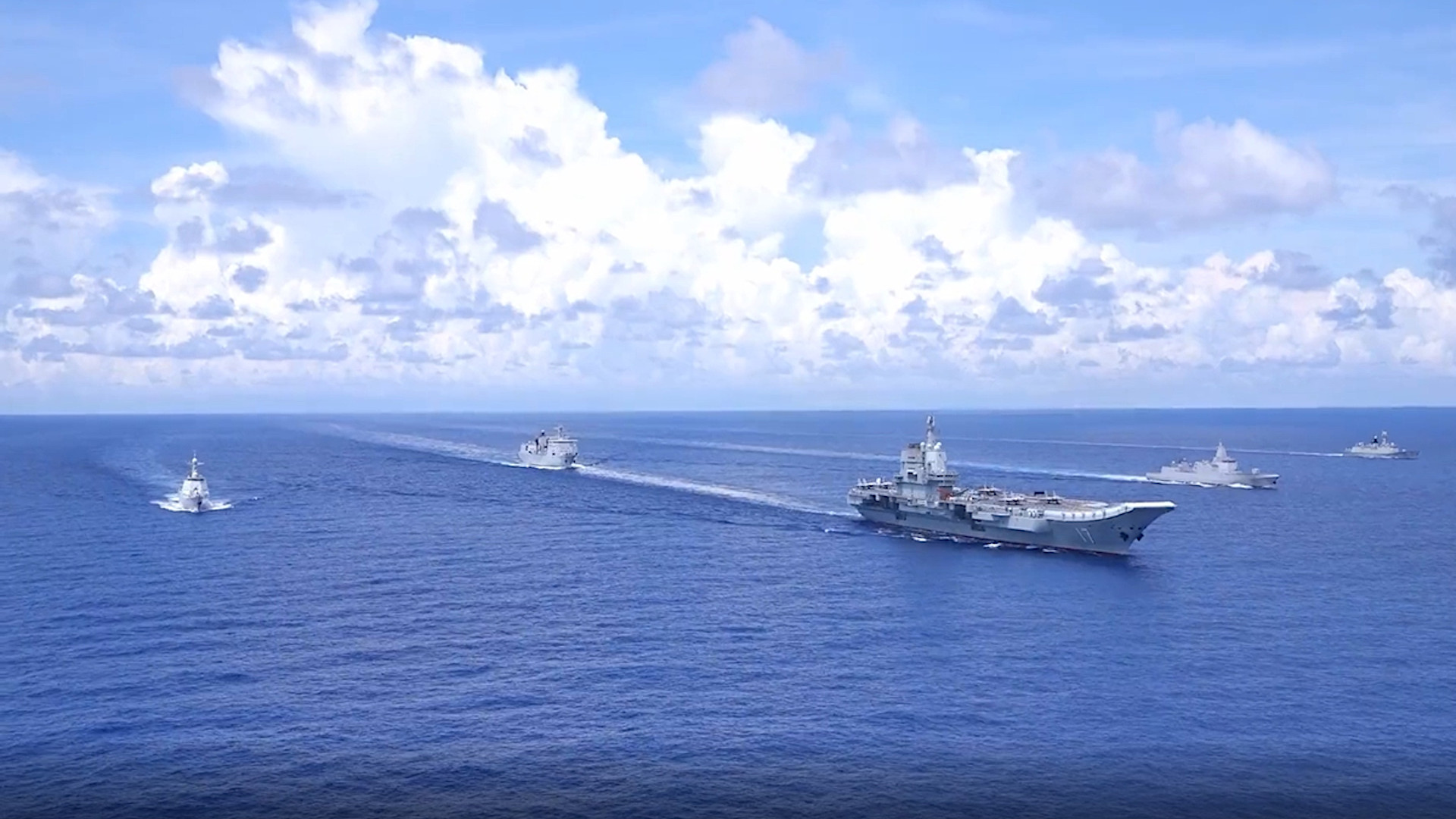The Chinese aircraft carrier Shandong has entered the South China Sea after nearly three weeks of operating in areas further east. This included sailing with the rest of its strike group within around 400 miles of the strategic U.S. island territory of Guam. This recent cruise in the Western Pacific underscores ongoing efforts by the People’s Liberation Army Navy to expand the scale and scope of routine operations using the flattops it has now and its still growing carrier ambitions overall.
The office of the Joint Staff of the Japan Self-Defense Forces (JSDF) issued a press release earlier today saying that it had tracked Shandong passing from the Philippine Sea into the South China Sea. One Type 055 destroyer, two Type 052D destroyers, two Type 054A frigates, and a Type 901 replenishment ship were accompanying the carrier at the time, according to that release. Japanese authorities have released images showing J-15 fighter jets and Z-18 and Z-9 helicopters operating from the carrier, as well.
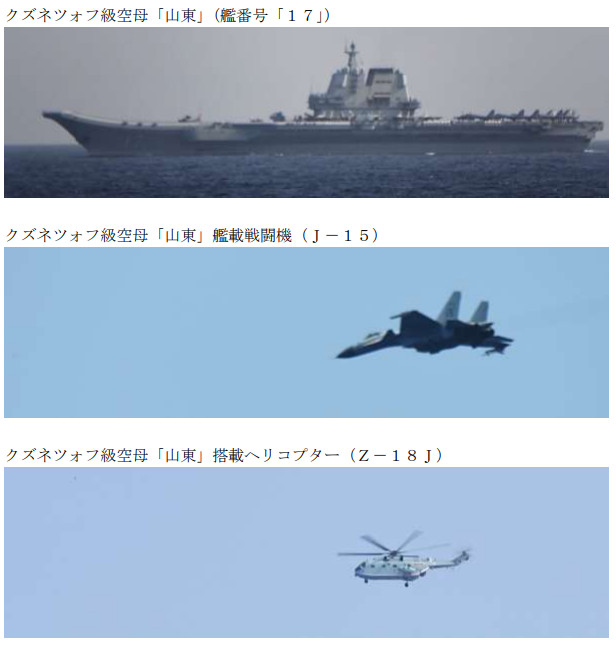
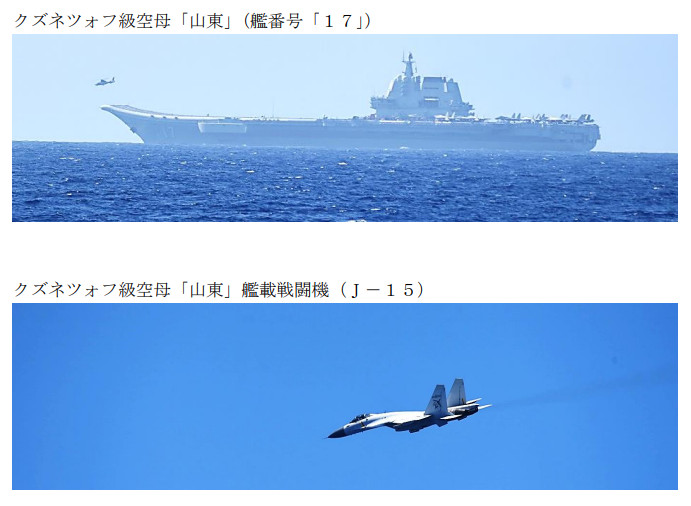
A map accompanying the Japanese Joint Staff press release today, seen below, shows a total of 18 separate points where Shandong and elements of its strike group were spotted between April 7 and April 24. Chinese state media previously reported that the carrier had taken part in “exercises encircling the island of Taiwan,” nicknamed Joint Sword, between April 7 and April 12 before sailing further east. You can read more about those drills here.
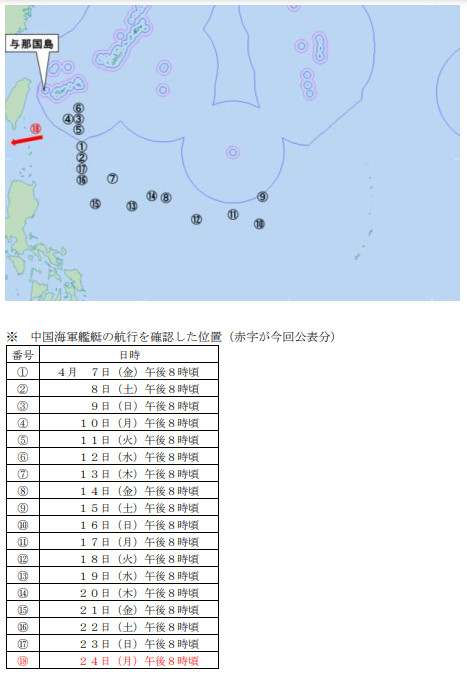
Based on the information from Japan’s Joint Staff, Shandong began a more pronounced transit toward Guam on April 14 and left that area around April 17. Chinese state media separately reported that the carrier was operating to the west of Guam between April 13 and April 16, getting as close as some 600 to 700 kilometers (approximately 373 to 435 miles) from the island at times.
“Joint Region Marianas is aware of and monitoring the situation, and is in continuous communication with the governor’s office and the Department of Civil Defense and Office of Homeland Security,” Navy Lt. Cmdr. Katie Koenig, a spokesperson for the service, told the Pacific Daily News in Guam last week. “We understand the local concerns and the angst that this may cause, and we want to assure the community of Guam that the military here remains keenly postured to defend United States equities and interests in this region from any adversary that may threaten national and international norms and rules-based order.”
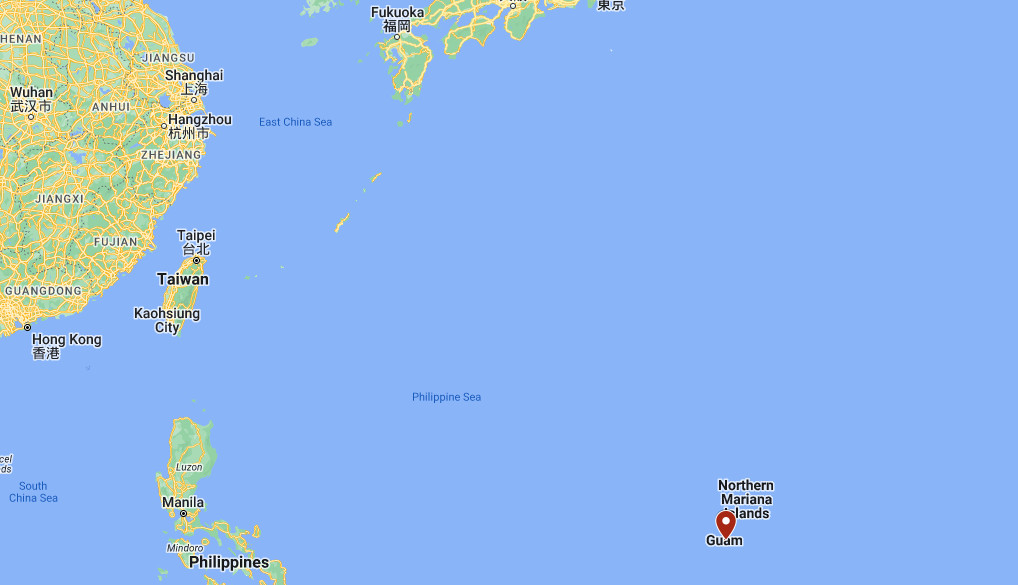
There is no clear indication one way or the other that Shandong or elements of its carrier strike group conducted drills specifically focused on striking Guam or other U.S. forces in the region, though it has done so in the past. Regardless, it’s hard not to see the ship’s presence in the area sending a number of messages. Guam is an immensely strategic island with U.S. bases that are host to major air, naval, and now ground forces.
American military planners expect Guam to be a major target in any future high-conflict in the region against China. As such, the U.S. military has been working to significantly expand the air and missile defenses on the island. On top of that, there are various additional efforts, including multiple new construction projects, to help provide alternative basing locations in the region should existing established facilities on Guam become unusable for any reason.
In addition, Shandong‘s arrival west of Guam followed the Joint Sword drills that were explicitly focused on demonstrating China’s capabilities to intervene militarily against Taiwan. There have been steadily growing concerns within the U.S. military that the People’s Liberation Army (PLA) could be in a position where it would feel confident in succeeding in such an operation by around 2027. The ability to deploy carriers east of Taiwan would give the PLA another option for striking at the island from that vector while also occupying a blocking position against U.S. or other foreign military forces heading west.
This is, of course, not the first time that a Chinese carrier has operated in these areas, including getting within 400 miles of Guam. The PLAN’s first carrier, Liaoning also sailed in the Western Pacific for a number of weeks last December. @detresfa_, an independent open-source intelligence analyst and contributor to The War Zone, has created a map, seen below, using data from Japanese and Taiwanese government sources, showing the approximate paths of both cruises.
In addition, Japanese authorities publicly put out interesting data on the total number of observed sorties during Liaoning and Shandong voyages in the Western Pacific. Both carriers were conducting operations for around the same amount of time overall. However, the fixed-wing aircraft and helicopters in Shandong‘s air wing conducted 610 sorties, while those embarked on Liaoning carried out 320 sorites, according to Japan’s Joint Staff. If accurate, Shandong‘s increased sortie rate is notable, though multiple factors could have contributed to this, including simply more planned flight operations.
Altogether, this only adds weight to the already clear indications that the PLAN views its growing carrier force as a broader tool for projecting power further and further beyond China’s borders. State media reports about Shandong‘s recent cruise in the Western Pacific highlighted this as a demonstration of the Chinese military’s ability to operate around the so-called “Second Island Chain.” The First Island Chain refers to a boundary that is defined by archipelagos opposite mainland East Asia extending from the southern end of the Japanese home islands all the way to the South China Sea. The Second Island Chain, which includes Guam and other U.S. island territories in the Marianas, traces a line one step beyond that into the Western Pacific.
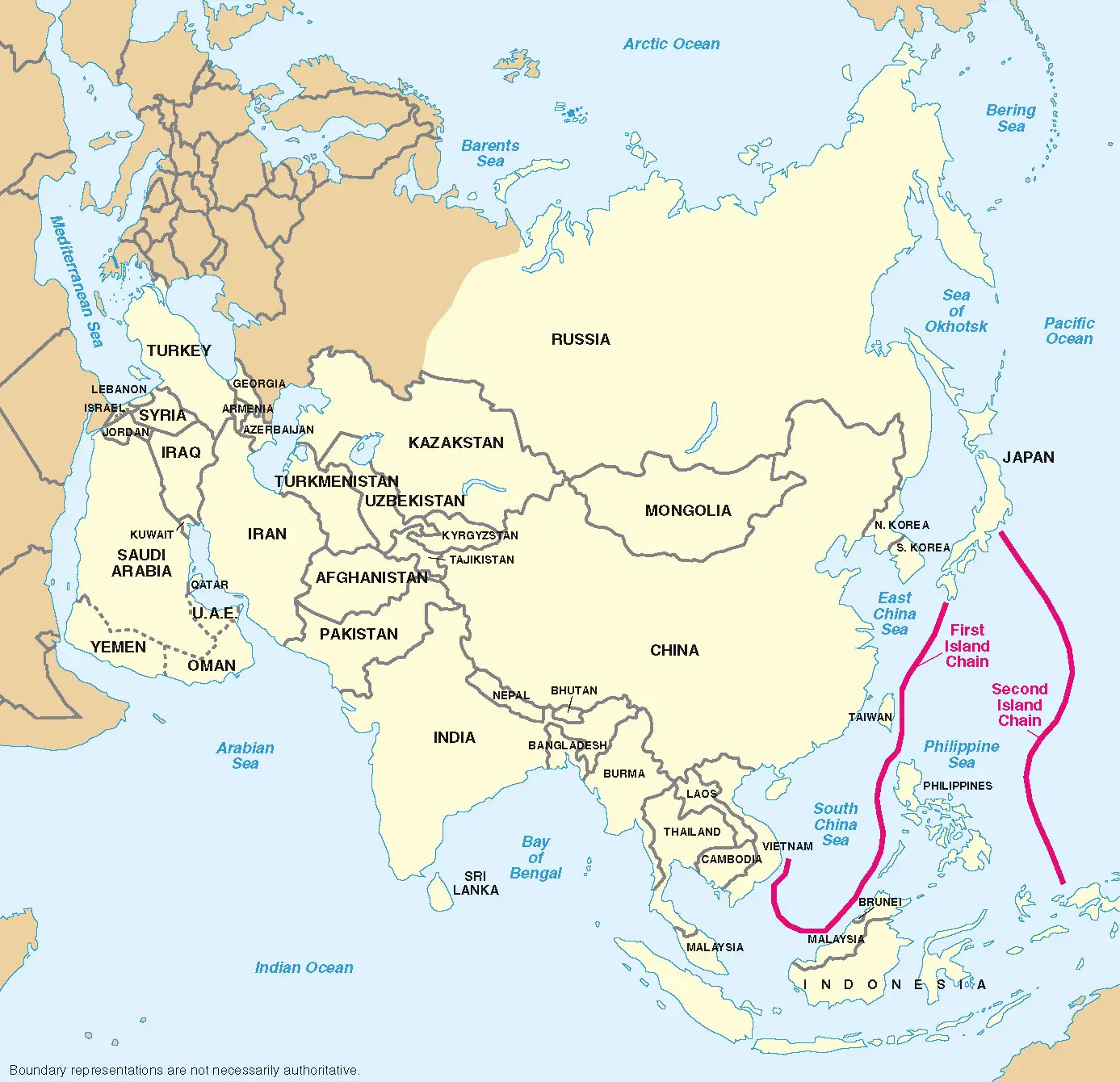
Historically, the PLAN has been a regional force largely focused on operations in the First Island Chain. For decades now, however, the PLA as a whole has been pursuing major expansion and modernization efforts with a clear eye toward expanding its ability to conduct operations globally.
When it comes to carriers, a third flattop, the Fujian, is now under construction for the PLAN. This will be the service’s first catapult-assisted takeoff but arrested recovery (CATOBAR) configured carrier. Liaoning and Shandong, the latter of which was China’s first domestically produced carrier of any kind, are both short takeoff but arrested recovery (STOBAR) types with prominent ski jumps at the front of their flight decks.

The CATOBAR arrangement will support a carrier air wing that looks set to include a number of new aircraft. Among these are a navalized version of the J-35 stealth fighter, the KJ-600 airborne early warning and control plane, and various drones.
The PLAN is understood to already be looking at acquiring at least one example of an even more advanced carrier, commonly referred to as the Type 004. Reports have long suggested that this design could be nuclear-powered, which would give it effectively unlimited range and help meet the power generation demands of ever-improving sensors, other mission systems, and possibly directed energy weapons.
The Chinese military has also been working to expand its naval infrastructure, or access to such facilities, abroad. This includes the establishment of bases capable of accommodating carriers and other large warships.
All told, if nothing else, Chinese carriers sailing relatively close to Guam and other areas further out into the Western Pacific look set to be an increasingly common sight.
Contact the author: joe@thedrive.com
